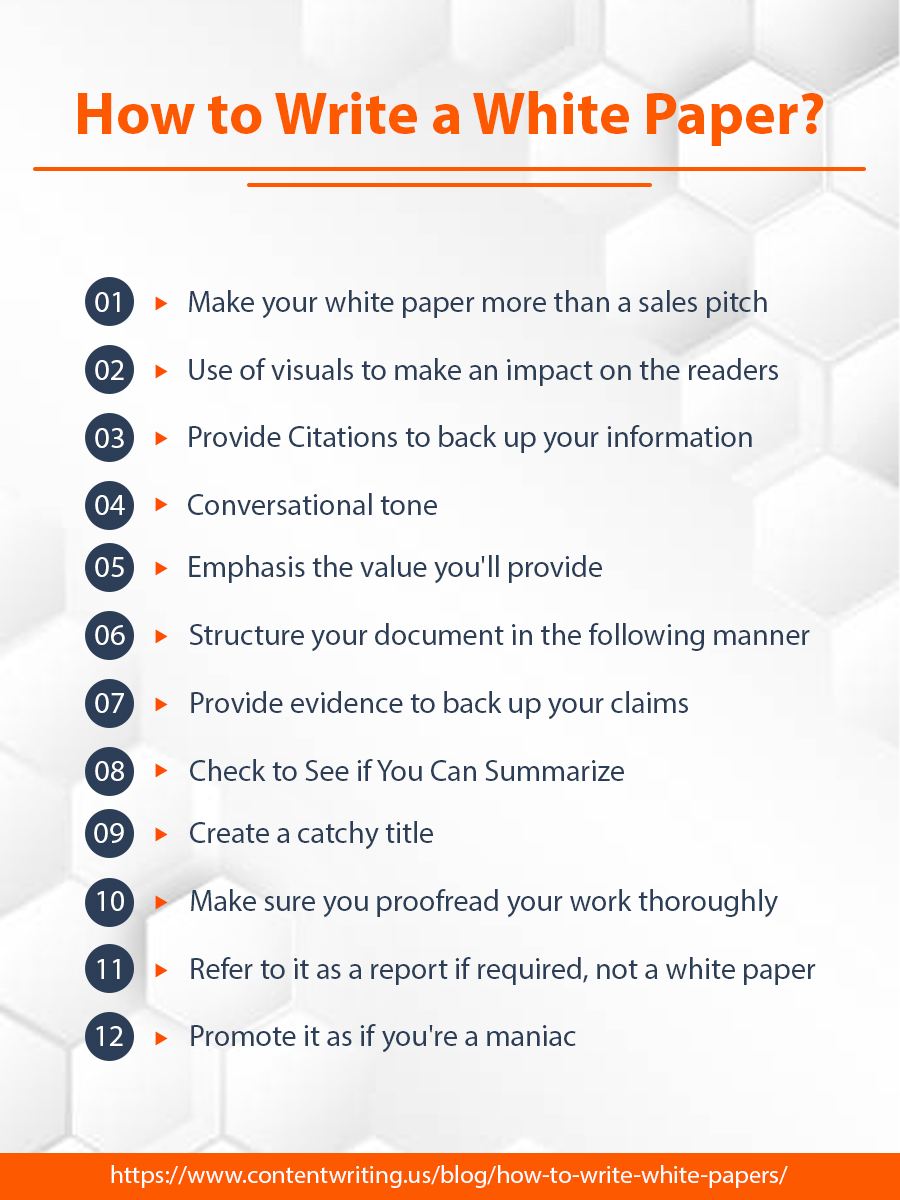It’s not simple writing white papers. If you’ve ever been asked to write one, you know what I’m talking about. And, if it’s your first time, you’re certain to have a lot of questions. To elaborate, how to write a white paper; what is its structure, and its tone is among many other guidelines. White papers that are well-written and supported by research may be effective tools. This helps to gain the reader’s confidence and establish brand authority. However, marketers often produce them in an assembly-line fashion, resulting in uninspiring material that falls short of expectations.
What is white paper exactly?
A white paper contains pages of marketing documents to explain an issue and a solution for it to a potential client. Producing one may assist you to generate leads, creating awareness, and competing on an equal footing with much bigger corporations. While producing a white paper takes time, when done well, it may offer substantial advantages to your company.
Begin writing the White paper by asking yourself the following questions:
- What is the worth of your product? What distinguishes you from the competition? You’re thinking of writing a white paper, you should have a good notion of what you want to say.
- What industry issue is this supposed to solve? This is probably something you’re already aware of at this point.
- Who stands to gain from this? Is your solution designed to address the pain points of a single user group or many groups?
- Who is your white paper’s intended audience? This is the solution to the preceding problem. Are the advantages of your product correlated if it serves several user groups?
- How do you make a connection with this audience? How can you fine-tune your tone to appeal to your target market? What is their degree of knowledge and experience? This will influence how you write your white paper.
Tips on how to write a white paper that is impactful and engaging
Here are suggestions for producing successful white papers if you want to use this high-powered marketing tool.
Offer valuable information to your prospects: how to write a white paper
Are you stumped as to what you might discuss in a white paper? You already know a lot more than you think you do.
Ask yourself the following questions to help you come up with a good topic:
What kind of issues do you assist with?
What recommendations do you have for them?
Example: Jack the electrician. Faulty wire lines, improper connections, and hasty connections are among the issues he discovers. And what causes them in certain cases? A do-it-yourself project went awry.
1. White paper example
What if Jack writes a paper titled “5 Electrician Jobs You Can Do Yourself. It could be “What Electrical Tasks You Should Do and Leave to a Professional”? What if he publishes the report on his printouts, Facebook, etc? Isn’t this something that would help Jack distinguish himself from the other electricians in town? Isn’t it going to make him look like the sort of person they can rely on?
2. Understand Your Audience
You must first comprehend your target audience. If you’re writing to a project manager, your writing will vary based on the requirements. This can help you determine how much clarification is required for particular words. Also, which problems are the most essential, and how technical your writing should be.
When to use a formal tone? How To Write a White Paper
Your writing should have a formal tone if a company prefers its company product. A serious tone is intended here. One that provides the reader with a solution to what he has a problem with. Maintain a professional demeanor. Contractions should be avoided at all costs. And write in a way that you’d feel comfortable presenting to a CEO of a large company.

1. Make your white paper more than a sales pitch
The most common mistake is converting a white paper into a sales presentation. It’s not a good idea! A good white paper responds to the queries that many prospects have. If you provide a sales pitch, you’ll squander this chance to become recognized and trusted.
2. Use of visuals to make an impact on the readers:
Include charts, infographics, statistical diagrams, illustrations, case studies, and tables in your white paper to make it more visually attractive. Provided the visuals don’t make white paper difficult to understand or overwhelming, they will assist keep the reader’s attention.
3. Provide Citations to back up your information
If you’re looking for evidence to back up your assertions, use a third-party source. This is better than testimonials from customers. Solid Supportive data or two may help your assertions be more credible.
Provide a reference list at the conclusion of the article. Make sure you include information about any linked source in your paper so that anyone can print it.
4. Conversational tone
Many entrepreneurs are averse to writing. You don’t need to be. Simply write in a pleasant, conversational tone, similar to this one. You want to come across as genuine, helpful, and reliable. There’s no need for large words or complicated phrases. An editor may help you polish your final manuscript.
5. Emphasis the value you’ll provide
Your white paper isn’t a billboard for your company. It’s a chance to establish a reputation for knowledge and insight that will benefit your readers. In exchange, they may purchase from you in the future. You must provide them with something of value that could emphasize your accomplishments.
6. Structure your document in the following manner
First, create a clear plan, and then begin writing your paper. Make sure your white paper corresponds to your objectives. Attract their attention, provide value, and persuade them to take action.
7. Provide evidence to back up your claims
If you make a claim, be ready to back it up with evidence. Obtain information, statistics, and quotations from professionals and reputable sources. Davis should have worked with the company on something to make a claim in regards to the work.
8. Check to See if You Can Summarize
Make sure the issue and solution are stated at the opening and the conclusion of the white paper, respectively. Your white paper will lose its power if readers can’t figure out precisely what you’re attempting to convey. A good summary may help you make your point and convince yourself about your product or service.
9. Create a catchy title
Visitors will notice your paper’s title when it appears in search results. Unless your title stands out, prospects may miss it.
A strong statement, a statistic, an approaching deadline, or a promise may all be used to make the title intriguing. Write a variety of titles, mix the best, and then put your choices to the test on real consumers.
10. Make sure you proofread your work thoroughly
Proofread your work thoroughly, keeping in mind that certain mistakes generate new words, so spell check won’t detect them all. Also, keep in mind that certain words sound similar but are written differently. To ensure your report is error-free, you should have someone proofread it for you.
Other white papers may be found on the internet. Simply google “white paper” and you’ll find a plethora of options. You should be aware that some of them are in PDF format, so look for them as well. Choose one and read it to discover what you like and dislike about it. Then use what you’ve learned to improve your writing.
11. Refer to it as a report if required, not a white paper
The phrase “white paper” is appreciated in certain industries, while it is overhyped or unknown in others. Labeling your paper a “special report” may help you gain momentum. Create a subtitle that identifies a particular work function or problem. For example, “A special report about DIY carpentry work,” to make the target audience obvious.
12. Promote it as if you’re a maniac:
It is insufficient to post a white paper on your website. You have to publicize it. Share it on Facebook, Twitter, your blog, and your LinkedIn group. Send it to any reporters, experts, or bloggers who may be interested. Consider using a service like PRWeb to distribute a news release. You should make sure as many people as possible see your white paper through different mediums.
Conclusion
To know how to write a white paper is just not an easy task to accomplish. However, the investment of time and skill can produce a precious file that shares your company’s knowledge, contributing to standard education and development in your industry. Clearly, an effective white paper will increase business opportunities.
